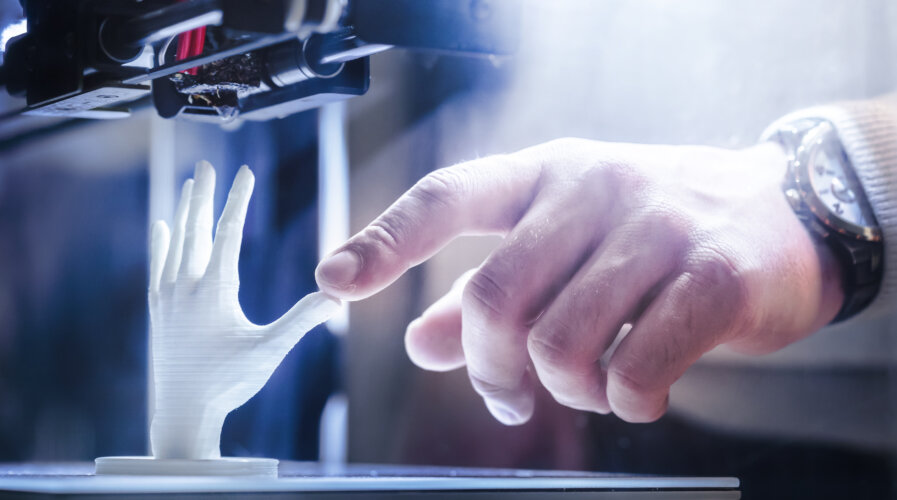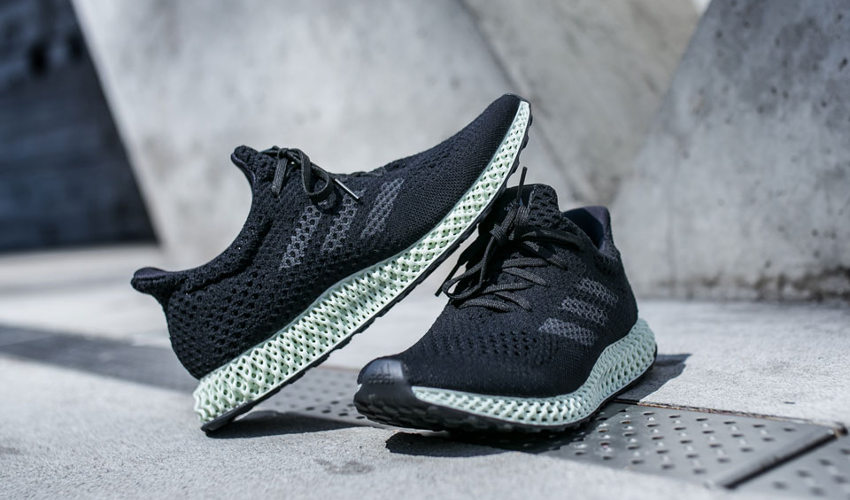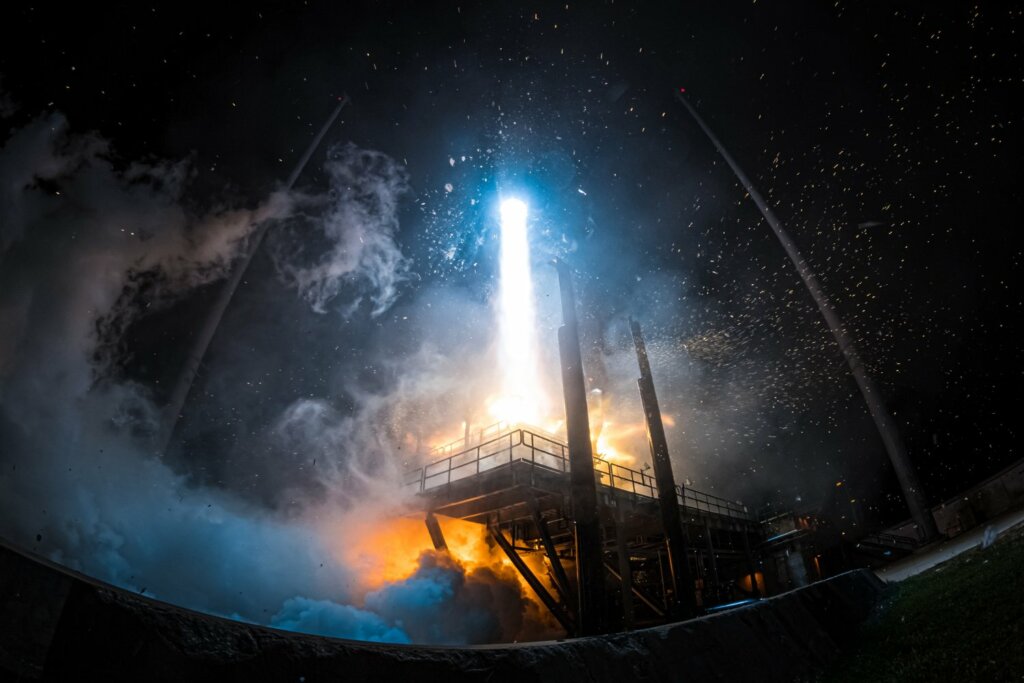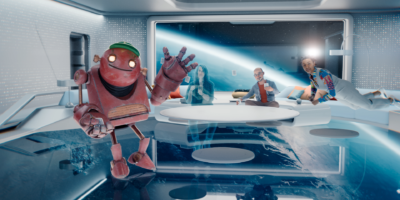
The top 5 fields 3D printing technology is accelerating. (Source – Shutterstock)
How 3D printing technology is crafting the future
|
Getting your Trinity Audio player ready... |
- 3D printing is bringing about a future of enhanced personalization, efficiency, and sustainability.
- It has a role in revolutionizing food, fashion, motorsports, healthcare, and aerospace industries.
In an era of rapid technological advancements, 3D printing technology stands out as a transformative force, redefining creation, innovation, and delivery across industries. From conceptualization to tangible manifestation, its impact is deeply felt both in academia and the industry.
With applications spanning diverse sectors such as healthcare, automotive, construction, aerospace, and beyond, 3D printing is not merely breaking the barriers of traditional manufacturing. It’s revolutionizing how we solve problems, design systems, and envision our world.
This article delves into the multifaceted potential of 3D printing. It explores its contributions across a plethora of sectors and how this innovative technology is set to redefine the future of industries on a global scale.
Top 5 fields that 3D printing is driving forward
Food
Let’s explore the intriguing world of 3D-printed food. Known initially for printed pizzas and sweets, this technology now extends to meat substitutes and lab-grown meat. It holds the potential to alleviate environmental strains from animal farming and cater to unique nutritional needs.
As stated in the 3D Printing Trend Report 2023, these printers transform digital designs from computer-aided design (CAD) software into edible realities. Unlike traditional printers, they use a variety of soft or paste-like foodstuffs, ranging from pasta and cheese to cookie dough and lab-grown meat.

3D printing technology now extends to meat substitutes and lab-grown meat. (Source – Hubs)
The printing process is akin to a pastry chef icing a cake intricately. The printer’s arm moves along a predetermined path, shaping the foodstuff into the intended design. As the operator uploads the design, the food, often converted into a paste, is heated inside the machine—not for cooking, but to enhance its malleability for printing.
But, how does it taste? Interestingly, the flavor of a 3D-printed item corresponds to the ingredient loaded into the printer. The printing process, including any heat exposure, doesn’t significantly alter taste.
However, a printer can influence a product’s sensory attributes by applying specific textural patterns called ‘infill.’ Yet, despite these textural variations, the flavor profile remains consistent.
Fashion
The transformative potential of 3D technology is creating waves in the fashion industry. Designers like Iris van Herpen have used it to make clothing seen on celebrities at events such as the Met Gala. Adidas and others are commercializing running shoes with 3D-printed midsoles, while Paris Fashion Week 2023 saw numerous brands feature 3D-printed shoes. Designers are exploring 3D printed textiles, paving the way for enhanced design freedom, customization, and material conservation.
The fashion industry is at the forefront of innovation, delving into the world of 4D printing. This technology adds the dimension of time to 3D printing, enabling objects to dynamically alter their shape or properties in response to external stimuli.
Such systems empower designers to create adaptive clothing and accessories that respond to environmental conditions and wearer preferences. Brands like Adidas are developing 4D-printed shoes that conform to the wearer’s foot shape and movement patterns, enhancing fit, cushioning, insulation, and breathability, and offering athletes a competitive edge.

Adidas commercializes running shoes with 3D-printed midsoles. (Source – Hubs)
Robin Brockötter, the resident 3D printing expert at Hubs, anticipates that 4D printed textiles will redefine the boundaries of design and functionality in the fashion industry. He envisions a future: “Imagine a coat that adapts to the cold by becoming thicker or hiking gear that increases its breathability when exposed to sweat.”
The exploration of shape-morphing systems is being led by the MIT Self-Assembly Lab, in partnership with Stratasys and Autodesk. Significant strides have been made in developing self-assembling and shape-shifting materials, with various potential applications in recent years. The innovations we see today are merely the beginning. As technology matures, the spectrum of possibilities will undoubtedly expand.
Motorsports
The adoption of 3D printing in motorsports like NASCAR, Formula 1, and MotoGP is on the rise, thanks to faster production, low-volume capabilities, and design freedom. It is used for prototypes, tools, and end-use parts to improve vehicle lightness and aerodynamics. Stratasys has partnered with NASCAR and McLaren, while Roboze assisted Ducati in the 2022 MotoGP season.
This transition towards 3D printing has precedents; in 2014, the now-obsolete Local Motors built the Strati, the world’s first entirely 3D-printed—and downloadable—car. This vehicle required a mere 44 hours to print and could speed up to 50 miles per hour. However, 3D printing in the automotive industry extends far beyond complete vehicles, playing a crucial role in creating prototypes and various car parts.
The upcoming 2024 Cadillac Celistiq is slated to feature over 100 3D-printed components. This vehicle is dubbed by General Motors, its manufacturer, as “the most technologically advanced Cadillac ever” and the one possessing the most 3D-printed parts.
Why are motorsport teams eagerly aligning with 3D printing companies? Motorsport teams partner with 3D printing companies because the technology provides a competitive advantage, aiding in producing lightweight, aerodynamically efficient parts to cut lap times. Manufacturers should observe the motorsports industry, where innovative technologies often transition from cutting-edge to standard production components.

The adoption of 3D printing in motorsports like NASCAR, Formula 1, and MotoGP is on the rise. (Source – Hubs)
Healthcare
Indeed, integrating 3D printing into point-of-care settings creates a paradigm shift, paving the way for personalized medical solutions, heightened efficiency, and improved patient outcomes. Another groundbreaking pathway is bioprinting, with its potential to revolutionize healthcare. The bioprinting human cells within hydrogel frameworks is set to significantly advance tissue engineering, particularly in regenerative medicine and drug development testing.
Even though bioprinting remains mainly within research and development, it has caught the attention of pharmaceutical companies who foresee advantages in accelerating drug testing.
The dental industry has found a significant ally in 3D printing technology, using it to fabricate implants, crowns, retainers, dentures, and anatomical models. The spectrum of applications for 3D printing extends to the creation of hearing aids, surgical models, and assistance with preoperative planning.
3D printing has already made a name in healthcare, crafting customized prosthetics and medical implants. However, existing techniques can be time and resource-intensive.
Hubs’ resident 3D printing specialist, Robin Brockötter, sees AI-assisted automation as a potential catalyst for expediting the process. He shares, “Specialized AI tools are set to reduce the complexity of the design process, making it easier for doctors and other healthcare professionals to be more involved in the undertaking.”
Considering AI’s transformative impacts in various domains, such as art, literature, and software development, it’s plausible to expect that AI can also turbocharge advancements in 3D printing technology. By making additive manufacturing quicker, more efficient, and hopefully more accessible and user-friendly, AI could potentially democratize the technology to the point where its usage becomes as straightforward as operating an office inkjet printer.
Aerospace
3D printing has revolutionized aerospace, aiding in spare parts creation, satellite manufacturing, lunar and Martian habitat exploration, and rocket engine fabrication. Notably, Relativity, a space launch startup, has accelerated rocket production using this technology, with its first fully 3D-printed rocket, Terran 1, poised for launch in 2023. This launch will confirm the viability of 3D-printed rockets, heralding a new era in aerospace manufacturing.
Following Terran 1’s expected success, the focus will shift to Terran R, a medium-to-heavy lift reusable rocket. The experience and data gained from Terran 1’s program will significantly aid in Terran R’s development.

3D-printed rockets, heralding a new era in aerospace manufacturing. (Source – Hubs)
Beyond 3D, 4D printing is transforming the industry. Research indicates that 4D-printed drone wings can adjust to different flight conditions, reducing air resistance and improving performance and fuel efficiency. This technology could also create lightweight, flexible structures for satellites and spacecraft, simplifying space missions and lowering costs.
Adrian Nordtomme, Director of APAPTA LTD, suggests that the advantages of 4D printing will also resonate across other transportation sectors. He comments, “I believe 4D printing could be particularly intriguing in applications where an electric current is applied to the object, instead of heat or light. This is especially relevant for the automotive, aerospace, and maritime industries, where there’s a keen interest in manipulating structures for aerodynamic purposes.”
Implications of 3D printing technology on everyday life
3D printing promises significant impacts on our daily life. In the realm of food, home printers might create meals tailored to specific dietary needs and preferences. This method not only adds visual appeal but also promotes healthier eating habits.
In the fashion industry, 3D printing will likely enhance personal expression through perfectly fitted, customized clothing. Additionally, 4D-printed clothes and shoes that adapt to environmental conditions could introduce a new level of comfort and functionality to our wardrobes.
Transportation will also undergo a transformation. 3D printing can produce lightweight, durable parts, leading to more efficient, safer, and personalized vehicles. This innovation could result in an improved driving experience.
Advancements in healthcare may include personalized medical solutions like custom-fit prosthetics, dental implants, and potentially, bioprinted tissues for transplantation. These developments could significantly improve the quality of life and extend lifespan.
3D printing technology could make space travel more accessible by enabling the printing of spare parts in space and facilitating the building of lunar and Martian habitats.
Finally, the combination of 4D printing and electrical currents suggests the creation of dynamic structures that can change according to our needs, leading to more energy-efficient, safer, and effective devices. Therefore, 3D printing holds a future of enhanced personalization, efficiency, and sustainability in our daily lives.
READ MORE
- Safer Automation: How Sophic and Firmus Succeeded in Malaysia with MDEC’s Support
- Privilege granted, not gained: Intelligent authorization for enhanced infrastructure productivity
- Low-Code produces the Proof-of-Possibilities
- New Wearables Enable Staff to Work Faster and Safer
- Experts weigh in on Oracle’s departure from adland


